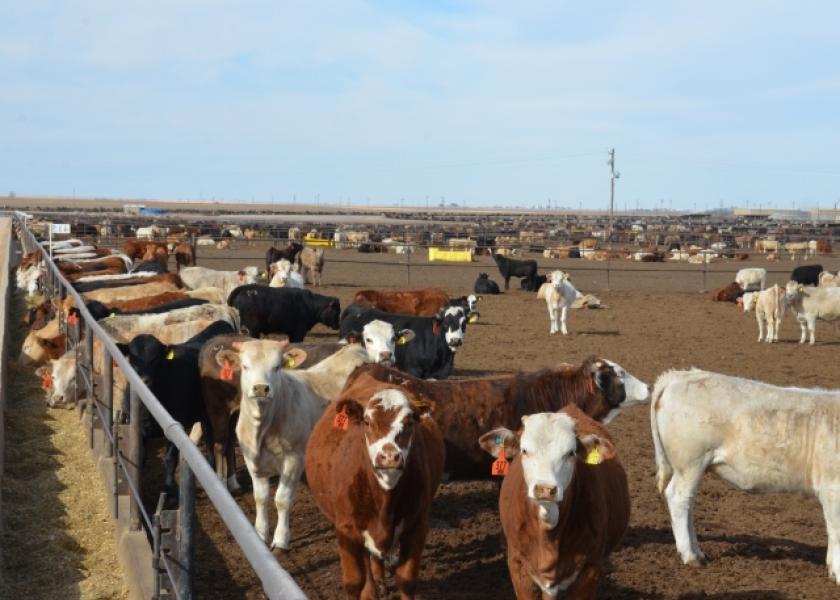Derrell Peel: More, Heavier Cattle Placed In Feedlots In October

The latest USDA Cattle on feed report pegs November 1 feedlot inventories at 11.83 million head in feedlots with a capacity of 1000 head or more. This is 101.2 percent of last year and up 4.8 percent from October as feedlot inventories increase to a seasonal peak. After two months of year-over-year decreases in cattle on feed totals, large October placements pushed November 1 inventories back above year earlier levels.
Annual average feedlot inventories (twelve month moving average) peaked in August but there is a chance that strong placements in the next few months could push to a higher average total. In other words, feedlot inventories are close but may not yet be quite at a cyclical peak.
October placements were 110.2 percent of one year ago, a bit lower than the average of a wide range of pre-report estimates. Several factors contributed to the relatively large October placement number including the fact that the number was compared to a small 2018 value; indications of general delays in feeder cattle marketing this fall; and additional August and September delays related to the August packing plant fire.
October marketings were 99.4 percent of last year, in line with pre-report expectations. Total placements in the six months from May to October were down 0.4 percent year over year while six-month total marketings were up 0.5 percent.
October placements were dominated by heavy weight feeders. Placements of feeder cattle over 800 pounds were up 29.5 percent year over year with placements 700-800 pounds up 14.9 percent compared to one year ago. Meanwhile, placement of feeders under 600 pounds were down 6.3 percent year-over-year. In the three months from August-October, placements of feeders over 700 pounds were up 4.6 percent year over year while placements of cattle less than 700 pounds were down 2.8 percent. This means that feedlots will be somewhat front-loaded for the next few months.
Regional contrasts are apparent in the latest cattle on feed report. October placements in Texas were up 14 percent year-over-year leading to a November on-feed total 107 percent of last year. In Colorado, a 23 percent increase in placements supported a feedlot inventory 105 percent of last year. Kansas placed 14 percent more cattle in October with a November feedlot inventory 103 percent of last year. By contrast, Nebraska placed only 3 percent more cattle in October compared to one year ago, leading to a November 1 feedlot total 95 percent of last year. Iowa had October placements up 7 percent year over year with a November 1 on-feed total 94 percent of one year ago.
Finally, my recent travels in Oklahoma and the Texas Panhandle have confirmed that the frustratingly slow wheat pasture development is finally making progress. I have noted a growing number of stockers on wheat recently and more wheat that appears nearly ready for turnout. Groups of cattle stockpiled on dry pasture waiting for wheat pasture are common. Western Oklahoma, in particular, remains pretty dry and in some cases wheat stocking rates are lighter than usual.
Related stories:
Fed Cattle $1 Higher Ahead Of Neutral COF







